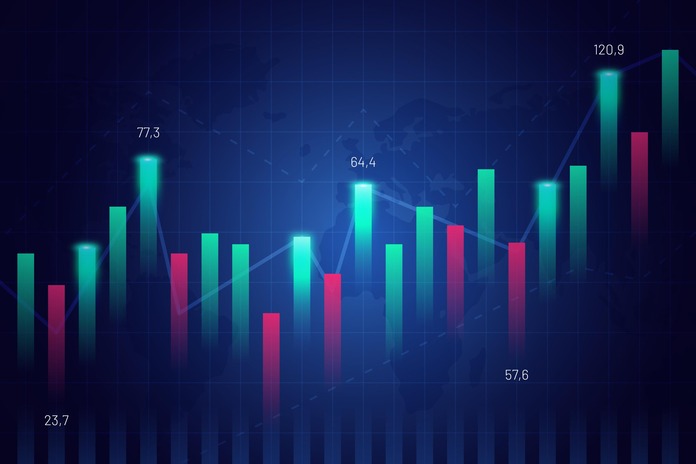The U.S. stock market volatility has surged amid escalating trade tensions between the United States and its major trading partners, especially China. This shift has resulted in a rollercoaster of price movements, with major indexes showing sharp fluctuations. Despite the uncertainty, there remains hope for a resolution, though the market remains on edge. The global market is responding nervously to President Donald Trump’s aggressive trade policies, leading to further concerns over the long-term economic consequences.
Stock Market Reaction: Sharp Swings and Increased Uncertainty
As the U.S. stock market opened on Wednesday, it was immediately clear that the volatility from the past few days would continue. The S&P 500, which is widely considered the backbone of many retirement portfolios, moved from a 0.5% loss to a 1.4% gain and then down again. By mid-morning, the index had managed a modest 0.3% increase after initially shaking in the early hours.
Meanwhile, the Dow Jones Industrial Average saw a decline of 34 points (or 0.1%), while the Nasdaq composite was showing a 1.1% increase. These rapid swings have become increasingly common as market participants try to predict the outcome of the ongoing trade conflict.
Tariffs Take a Toll on the Global Economy
The U.S. stock market volatility has been driven largely by tariff escalations. After President Trump announced new tariffs on imports from China, including a staggering 104% tax on Chinese goods, China retaliated swiftly with an 84% tariff on U.S. exports. The impact of these escalating tariffs is now being felt on both sides of the Pacific. While there are still hopes that negotiations could de-escalate tensions, fears of a protracted trade war and its toll on global growth remain significant.
The European Union has also entered the fray, approving tariffs on $23 billion worth of U.S. goods. This move has further amplified concerns over the long-term economic stability of the global market. The escalating tensions are particularly concerning for industries dependent on international trade, such as airlines and retailers.
U.S. Bond Market: A Sign of Stress
Amid all the U.S. stock market volatility, bond investors have also been feeling the pressure. Treasury yields have surged sharply, reaching 4.37% for the 10-year U.S. Treasury bond, a significant increase from 4.26% the previous day. Analysts attribute this move to the need for hedge funds and other investors to sell their U.S. Treasury bonds to cover losses in the stock market. Additionally, foreign investors may be selling off U.S. bonds as the trade war intensifies, adding further strain to the bond market.
This surge in bond yields is likely to impact U.S. households, especially as mortgage rates and loan rates could rise, making it more expensive for Americans to borrow money. The connection between the bond market and the stock market is undeniable, and these developments add additional layers of uncertainty to an already volatile financial landscape.
Corporate Earnings in the Face of Global Uncertainty
The uncertainty surrounding the trade war is making it more difficult for U.S. companies to predict their earnings. Delta Air Lines (NYSE: DAL) has already pulled its financial forecasts for 2025 due to the uncertainty in the global trade environment. The airline’s CEO, Ed Bastian, stated that the broader economic slowdown, driven by the trade war, has negatively impacted bookings and general travel demand.
However, not all companies are as pessimistic. Walmart (NYSE: WMT) has reaffirmed its forecast for sales and operating income, suggesting that some businesses may be better insulated from the ongoing trade conflict. The ability of large retailers like Walmart to weather such storms will be crucial in determining the broader economic impact of the trade war.
Global Markets React to U.S. Stock Market Volatility
The impact of the U.S. stock market volatility is not confined to the United States alone. Stock markets in Europe and Asia have also seen significant declines, with the FTSE 100 in London dropping 2.2%, the Nikkei 225 in Tokyo falling 3.9%, and the CAC 40 in Paris retreating 2.6%. Meanwhile, Chinese stocks showed some resilience, with the Shanghai Composite rising 1.3% and the Hang Seng in Hong Kong climbing 0.7%.
As the U.S. stock market volatility continues, investors will need to stay alert and be prepared for further swings. The trade war’s effects are far-reaching, and it remains to be seen how long these tensions will persist. For now, the markets are reacting in real-time to every new development, and the road ahead looks uncertain.
Featured Image – Freepik








